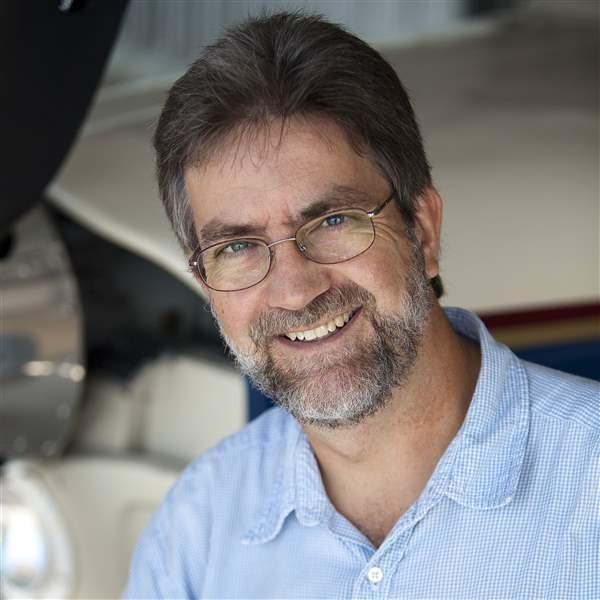One of the saddest things I see in aviation is the individual who works hard, investing a lot of time and money, to earn a pilot certificate - and then doesn't use it. We've all seen these people around the airport. Maybe they're nervous about flying any great distance, or they're apprehensive about going to a new airport, or they don't trust their weather judgment, or their confidence has slipped without the reassurance of a flight instructor in the right seat.
One way that flight schools and FBOs can reach out to these "at risk" pilots, motivate them, and keep them flying is to organize group fly-outs (see "Destination: Experience," p. 30). Arlynn McMahon, chief flight instructor at Aero-Tech in Lexington, Kentucky, has been arranging this kind of trip for 20 years.
"It bothered me to see how many people spent time and effort in obtaining a pilot certificate, then never fly again," McMahon said. "I saw that they needed a little more confidence and that students needed to be gently weaned from their instructor. My motto was, 'Now that I've taught you to fly, let me teach you to love flying,' and it worked. I love to fly. I also like to scuba dive and snow ski - two things we don't do much of in Kentucky - so I was always flying somewhere. One day the scuba instructor suggested we offer scuba training to pilots and then let them fly to Key West, Florida, for the open-water scuba dive. It worked so well we just keep doing it."
Aero-Tech has been offering what it calls "Adventure Vacations" ever since. "We fly annually to Taos, New Mexico, and to Colorado to snow ski. We've been to Alaska; on a fall foliage tour of the New England states; Honduras; Mexico. The mother of all shopping trips was to the Mall of America in Minneapolis. We fly often to Panama City, Florida, and teach pilots how to sail - you'd be surprised how many similarities there are between the two - but you can actually see the aerodynamics happening on the sails."
Aviation education is the primary mission of the trips, McMahon explained. "Our focus is teaching pilots how to be better pilots at whatever their current level, and maybe to stretch a little into the next level. We want to get pilots far enough away from home that they are in totally new airspace, terrain, and weather patterns. We stress preflight planning, weather briefing, and monitoring your nav logs. We even have an extra training program for our instructor/employees specifically on how to conduct adventure vacation instruction. The trips get our flight instructors out of the traffic pattern, offer job diversity, and build flying stories."
Twenty years of trips have left McMahon with lots of vivid memories.
"We landed at Jackson Hole, Wyoming, with the sun setting behind Grand Teton. It was only at that moment that I really understood why they say 'purple mountain majesties.' That vision I will hold in my head forever. I saw icebergs calving and a herd of killer whales from 1,000 feet msl in Glacier Bay.
"We landed in Talkeetna, Alaska, for fuel many years ago. At the time this was a tiny, rural gravel airport that stored fuel in 50-gallon drums. I was concerned about rust in the drums - so, being a genteel Southern belle, I pulled out my panty hose. How many pilots do you know carry an extra pair of panty hose in their flight bag - and think to use them as a filter to pour the fuel through before pouring it into the wing tanks? Sometimes you've got to be creative.
"One night in 1998, returning from a Vail ski trip, a pilot over Salina declared an emergency in IMC and lost all electrical power. Communications with the plane were lost, and radar coverage was intermittent. My students decided that we could safely descend to the airport that ATC expected the pilot-in-trouble to be headed for and activate the pilot-controlled lights. As a result, the pilot was able to see the airport and land safely. The air traffic manager at the center wrote us a nice letter thanking us for our assistance.
"Once we had an alternator failure in Whitehorse, Canada. There is not a lot to do in Whitehorse. But you would have died laughing to see 13 adults making fools of themselves all afternoon, sucking helium from the flight service station�s weather balloon and talking like Daffy Duck. It was fun that only a pilot would understand."
---
This December 17 marks the centennial of powered flight ("The Wright Stuff," p. 26). Such a significant milestone invites us to reflect on the past 100 years - and look ahead to the future. We'll publish a few more articles on these themes as the year progresses, but if you can't wait for the next one, check out the Centennial of Flight resource page on AOPA Online. If you're looking for an adventure vacation destination of your own, consider First Flight Airport in Kill Devil Hills, North Carolina, where you can land only a few hundred feet from where the Wrights first flew.



